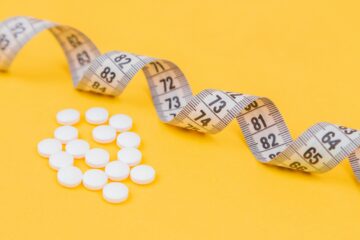The Atkins diet is a low-carbohydrate diet that was developed by Dr. Robert C. Atkins in the 1970s. It is based on the theory that by reducing carbohydrate intake and increasing protein and fat consumption, the body will shift its metabolism to burn stored fat for energy, resulting in weight loss.
The diet emphasizes whole foods, lean proteins, healthy fats, and low-carbohydrate vegetables while discouraging processed foods, sugar, and grains. It aims to control insulin levels and stabilize blood sugar, leading to weight loss and improved overall health.
Atkins Diet Phases:
Induction:
This initial phase restricts carbohydrate consumption to 20 grams per day, primarily from low-carb vegetables. High-protein foods such as meat, fish, eggs, and cheese are encouraged, while foods high in carbohydrates, such as bread, pasta, sugar, and fruits, are avoided.
Balancing:
In this phase, you gradually increase your daily carbohydrate intake by 5 grams per week, aiming to find the critical carbohydrate level for weight loss maintenance. More types of vegetables, nuts, and small amounts of fruits are added to the diet.
Fine-tuning:
Once you are close to your weight loss goal, you further increase your carbohydrate intake to a level that still allows for weight loss but maintains a healthy lifestyle. This phase involves a slower pace of weight loss.
Maintenance:
Once you reach your weight loss goal, you enter the maintenance phase, where you can increase your carbohydrate intake further as long as you maintain your weight. The focus is on finding a sustainable eating pattern that suits your body.
Atkins Diet Health Benefits:
The Atkins diet has been associated with several potential health benefits, although it’s important to note that individual results may vary. Here are some potential health benefits often attributed to the Atkins diet:
Weight loss:
One of the primary benefits of the Atkins diet is its potential for weight loss. By limiting carbohydrate intake and focusing on proteins and healthy fats, many people have experienced initial rapid weight loss. This can be motivating for individuals seeking to shed excess pounds.
Improved blood sugar control:
The Atkins diet restricts the consumption of high-carbohydrate foods, which can help stabilize blood sugar levels. This is particularly beneficial for individuals with insulin resistance, prediabetes, or type 2 diabetes. By reducing the intake of sugars and refined carbohydrates, the diet can potentially improve insulin sensitivity and glycemic control.
“Several diets, including Atkins, are designed to assist people in controlling their weight and avoiding illnesses including metabolic syndrome, diabetes, high blood pressure, and cardiovascular disease”.
Increased HDL cholesterol:
The Atkins diet tends to raise levels of high-density lipoprotein (HDL) cholesterol, often referred to as “good” cholesterol. Higher levels of HDL cholesterol are associated with a reduced risk of heart disease.
Reduced triglycerides:
By limiting carbohydrate intake, the Atkins diet can lower levels of triglycerides, which are a type of fat found in the bloodstream. Elevated triglyceride levels are often associated with an increased risk of heart disease.
Appetite control:
Protein and fat are more satiating than carbohydrates, meaning they can help you feel fuller for longer periods. This can potentially lead to reduced calorie intake and better appetite control, making it easier to stick to the diet and avoid excessive snacking.
Risks Associated with Atkins Diet:
While the Atkins diet has been associated with certain health benefits, there are also potential risks and concerns to be aware of. These risks may vary depending on individual factors, including pre-existing health conditions. Here are some potential risks associated with the Atkins diet:
Nutrient deficiencies:
Severely restricting carbohydrates can result in a reduced intake of certain nutrients found in carbohydrate-rich foods, such as dietary fiber, vitamins, and minerals. It’s essential to ensure that you obtain these nutrients from alternative sources to avoid deficiencies. A well-rounded, nutrient-dense diet is crucial.
Increased intake of saturated fats:
The Atkins diet promotes higher consumption of protein and fat, which can lead to an increased intake of saturated fats, primarily from animal sources. High intake of saturated fats has been associated with an increased risk of heart disease and other health issues. It’s essential to choose healthier sources of fats, such as nuts, seeds, avocados, and fatty fish, and to moderate intake of saturated fats.
Potential kidney problems:
High-protein diets, such as the Atkins diet, can put additional stress on the kidneys. This can be a concern for individuals with pre-existing kidney problems. It’s important to monitor kidney function and consult a healthcare professional if you have any kidney-related issues.
They suggest that people with diabetes may benefit from consuming healthy carbohydrates, such as whole grains. Whole grains are not allowed on the Atkins diet until later stages. It’s imperative to note that individual experiences may vary, and the risks and benefits of the Atkins diet can depend on various factors.
Foods to Limit:
In the Atkins diet, the focus is on reducing carbohydrate intake, particularly those that are high in refined sugars and starches. Here are some foods that are typically limited or avoided in the Atkins diet:
- Grains: Wheat, rice, oats, barley, corn, and other grains are generally restricted or eliminated. This means avoiding foods like bread, pasta, cereals, and baked goods made with refined flour.
- Sugar and sugary foods: Refined sugar, high-fructose corn syrup, and other sweeteners are limited or avoided. This includes candy, soda, fruit juices, desserts, and sweetened beverages.
- Starchy vegetables: Potatoes, sweet potatoes, peas, and corn are higher in carbohydrates and are generally limited on the Atkins diet.
- Legumes: Beans, lentils, and chickpeas are higher in carbohydrates and are typically restricted in the early phases of the Atkins diet.
- Fruit: While some fruits are allowed in moderation in later phases of the diet, initially, fruits with higher sugar content are limited. This includes bananas, grapes, mangoes, and other tropical fruits.
- Processed foods: Highly processed foods, such as packaged snacks, chips, and convenience meals, are generally discouraged due to their high carbohydrate and often high sugar content.
- Certain dairy products: While dairy products can be consumed on the Atkins diet, it’s important to choose those with lower carbohydrate content. Milk and yogurt, for example, can be higher in lactose (a naturally occurring sugar in milk) and should be consumed in moderation.
the Atkins diet emphasizes whole, unprocessed foods, including proteins, healthy fats, and low-carbohydrate vegetables. These foods are typically encouraged and form the foundation of the diet. As you progress through the different phases of the Atkins diet, you may gradually introduce certain foods back into your eating plan, but in controlled portions and based on your carbohydrate tolerance.
What to Eat:
The Atkins diet focuses on consuming foods that are low in carbohydrates and rich in protein, healthy fats, and non-starchy vegetables. Here are some foods that are commonly included in the Atkins diet:
- Protein sources: Meat (beef, poultry, pork, lamb), fish (salmon, trout, tuna), eggs, and seafood (shrimp, mussels, crab) are all excellent sources of protein. opt for lean cuts of meat and include a variety of protein sources in your meals.
- Healthy fats: Avocados, olive oil, coconut oil, nuts (almonds, walnuts, pecans), seeds (chia seeds, flaxseeds), and fatty fish (salmon, mackerel) are rich in healthy fats. These fats provide satiety and can be included in your meals to add flavor and texture.
- Low-carb vegetables: non-starchy vegetables are an essential component of the Atkins diet. Examples include leafy greens (spinach, kale, lettuce), broccoli, cauliflower, bell peppers, zucchini, cucumbers, and asparagus. These vegetables are low in carbohydrates and high in fiber, vitamins, and minerals.
- Dairy products: Cheese, butter, and full-fat yogurt are generally allowed in moderate amounts. Be mindful of the carbohydrate content of certain dairy products and choose those with lower carbohydrate content.
- Nuts and seeds: Almonds, walnuts, pecans, chia seeds, and flaxseeds are low in carbohydrates and provide a good source of healthy fats, fiber, and protein. They can be included as snacks or added to meals and salads.
- Berries: Berries such as strawberries, blueberries, raspberries, and blackberries are lower in carbohydrates compared to other fruits. They can be enjoyed in moderation in later phases of the Atkins diet.
- Sugar substitutes: Certain sugar substitutes, such as stevia or erythritol, can be used to sweeten foods or beverages if desired. However, it’s important to use them in moderation and be mindful of their impact on your carbohydrate tolerance.
Sample Atkins Menu for 1 Day:
Here’s a sample Atkins menu for one day, focusing on low-carbohydrate, protein-rich foods, and healthy fats:
Breakfast:
Scrambled eggs cooked with spinach and topped with shredded cheese
Sautéed mushrooms and bell peppers on the side
A side of bacon or turkey sausage
Snack:
A handful of almonds or walnuts
Lunch:
Grilled chicken breast served with a mixed green salad, dressed with olive oil and vinegar
Sliced avocado and cherry tomatoes as salad toppings
A side of steamed broccoli or asparagus
Snack:
Celery sticks with almond butter or cream cheese
Dinner:
Baked salmon seasoned with herbs and lemon
Roasted Brussels sprouts with olive oil and garlic
A side of cauliflower rice or zucchini noodles
Snack:
Greek yogurt with a few fresh berries and a sprinkle of nuts
Remember to adjust portion sizes and food choices based on your individual dietary needs and goals. It’s important to consume an appropriate number of calories and macronutrients for your activity level and health status.
Final Words:
Before starting the Atkins diet or any other diet plan, it’s important to consult with a healthcare professional or registered dietitian. They can provide personalized guidance based on your specific health needs, goals, and any pre-existing conditions. Additionally, a well-rounded and balanced approach to nutrition, incorporating a variety of whole foods, is crucial for long-term health and sustainability. Remember that lifestyle changes, including diet, should be approached holistically and in conjunction with regular physical activity and overall healthy habits.






0 Comments